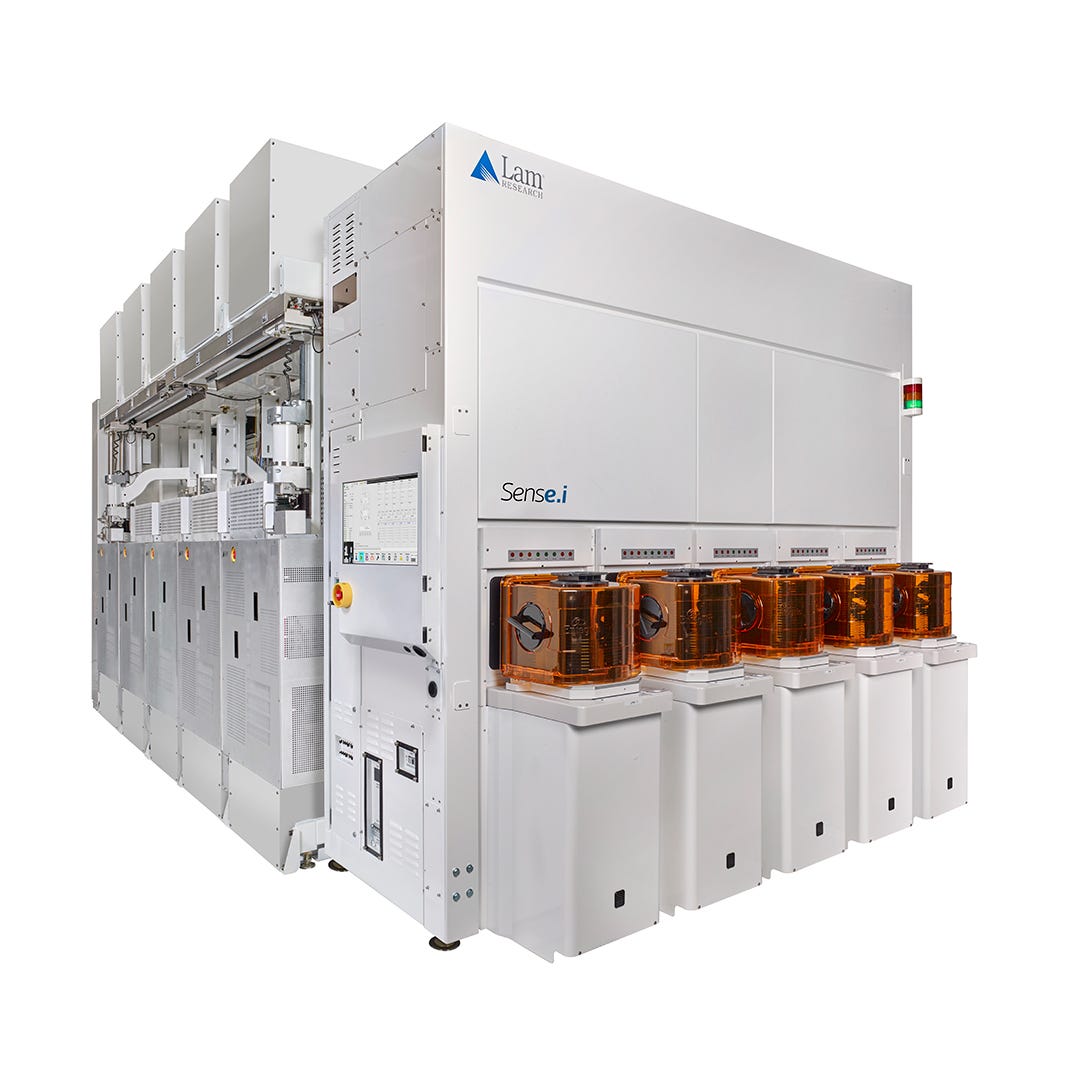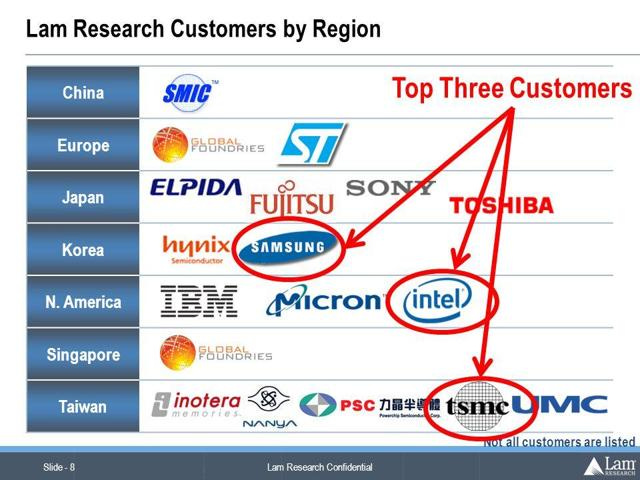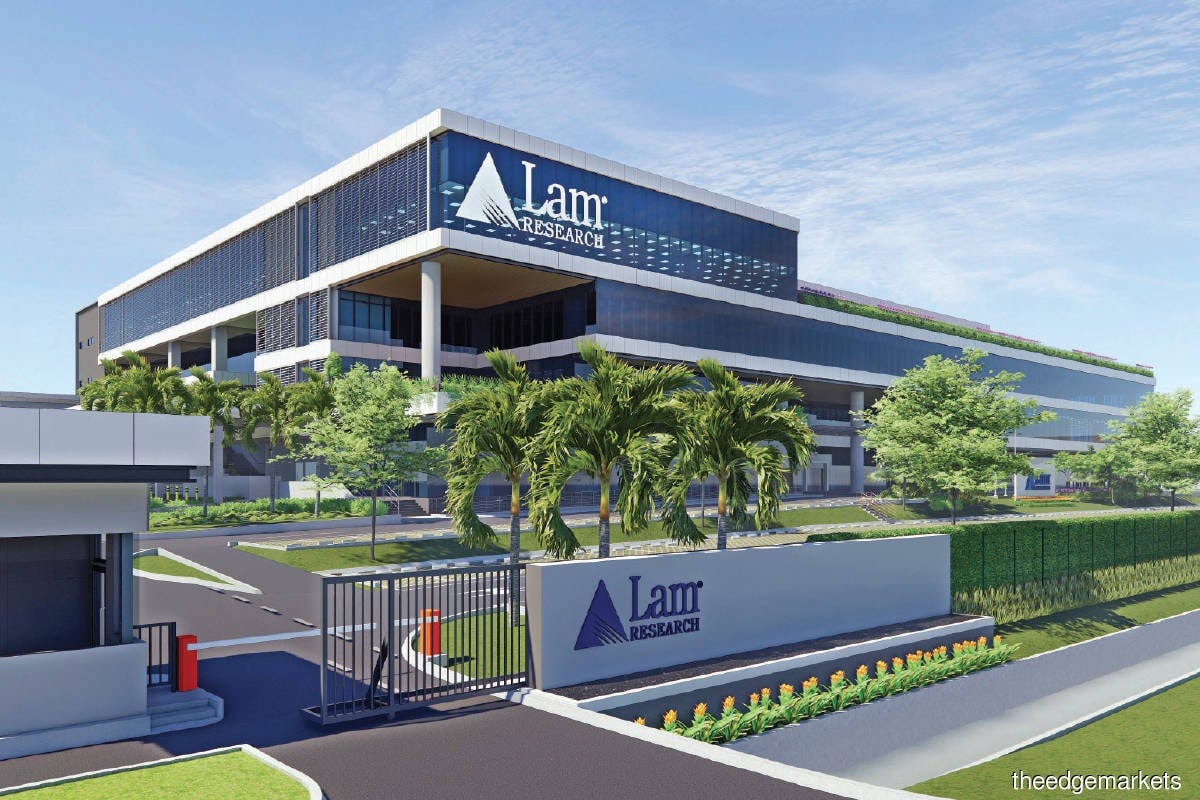Lam Research
A company that has outperformed Apple and Microsoft over the past five years, yet nobody has heard of it. Lets dig into its moats!
Hi, welcome back to Moat Masters. In today’s post, we will be looking at Lam Research, a little known semiconductor question that has very interesting competitive advantages and has outperformed big tech companies like Apple, Microsoft, and Google. It is unbelievable that a company that the bulk of investors have never heard of has done ~50% better than MSFT and ~10% better than AAPL over the past five years.
I hope you enjoy this post! Please feel free to leave suggestions on companies you want us to analyze with unique moats.
Lam Research Corporation (LRCX)
General Company Overview
Lam Research Corporation, incorporated in 1980, is a global supplier of innovative wafer fabrication equipment and services to the semiconductor industry. The company is headquartered in Fremont, California, and maintains a network of facilities throughout Asia, Europe, and the United States to meet the needs of its dynamic customer base. Lam Research's products and services are designed to help its customers build smaller and better-performing devices that are used in a variety of electronic products, including mobile phones, personal computers, servers, wearables, automotive vehicles, and data storage devices. The company's customer base includes leading semiconductor memory, foundry, and integrated device manufacturers that make products such as non-volatile memory, dynamic random-access memory, and logic devices.
Products, Business Model, and Revenue Generation
Product Portfolio: Lam Research Corporation's product portfolio is focused on leading-edge equipment in deposition, etch, and clean markets, as well as non-leading-edge equipment from the company's Reliant product line. The company's products are designed to meet the increasing demand for advanced and mature nodes in the semiconductor industry.
Business Model: The company's business model is centered around meeting its customers' increasing demand for all of its products by maximizing factory capacity, reducing installation cycle time, and optimizing the performance of its systems in the field. This approach ensures that Lam Research can deliver cost-effective solutions for all applications, from leading-edge to mature nodes.
Revenue Generation: Lam Research's revenue is generated from the sale of these systems to its customers, who use them to manufacture semiconductors. The company's growth is driven by the increasing demand for its products in the semiconductor industry. In addition to system sales, the company's revenue streams are also supplemented by its Customer Support Business Group (CSBG), which provides customer service, spares, and upgrades. This part of the business is described as being "super cash generative" and plays a key role in driving the profitability of the business.
Customer Base: The company's largest customers are major chip manufacturers. These companies rely on Lam Research's advanced lithography machines for the production of their semiconductor chips. The cost of Lam Research's machines is substantial due to their advanced technology and the value they provide to customers. For instance, the company's leading-edge equipment is sold at a premium due to its increased productivity. As for transportation, Lam Research machines are shipped to customers globally.
Competitors
Lam Research operates in the semiconductor capital equipment industry, facing significant competition from companies like Applied Materials, ASML, and Tokyo Electron. Lam Research also faces competition from its own customers, who in some instances have established affiliated entities that manufacture equipment similar to Lam's. The fractured nature of the advanced modern-day semiconductor industry has led many companies to become extremely specialized. Companies like Lam Research, ASML, TSMC, and many others are all able to operate and grow rapidly in the same industry. While Lam does not have a competitor who does precisely what the company does, other semiconductor equipment manufacturers do compete in the larger industry vertical.
This industry can be extremely confusing, and wrapping your head around what Lam does versus what ASML does versus what TSMC does can get confusing. here is a video that explains Lam Research’s engineering. Remember when watching that Lam is the only company who does what they say they do. They essentially have no competitors in this very niche process.
Historical Moat
Historically, Lam Research has demonstrated a strong "Process Power" moat, one of the seven powers in Hamilton Helmer's framework. Process Power refers to embedded company organization and activity sets which enable lower costs and/or superior product, and which can be matched only by an extended commitment.
Lam Research's Process Power is evident in its capabilities in multiple patterning, process flow, and advanced packaging chip integration. These capabilities have led to an increase in the served addressable market for their products and services in the deposition, etch, and clean businesses. This suggests that Lam Research has a unique and efficient process that is hard for competitors to replicate, which is a form of process power.
The company has consistently invested in research and development, as indicated by multiple mentions of this activity in their financial documents. This consistent focus on R&D likely contributes to their ability to innovate and improve their products to meet the increasing demand in the semiconductor industry.
Furthermore, Lam Research's focus on process efficiency and effectiveness is suggested by their ability to manage supply chain constraints and see improvements in their operations. This focus on process efficiency and effectiveness has likely been a key factor in Lam Research's ability to maintain its market share despite strong competition.
The company has been a leader in the semiconductor wafer-fab manufacturing industry for decades. This expertise comes with significant historical experience including proprietary information and trade secrets. The CTO has been with the company for 27 years, assisting in the development of this technology and experience that only comes with time and can not be replicated, further contributing to Lam Research's historical process power moat.
Lam Research’s Current Competitive Moat
Process Power
Lam’s current competitive advantage remains its process power. This process power moat has become more defensible and the strength of the company’s competitive advantage has only grown in tandem with the complexity in the semiconductor industry. The following is a breakdown of LRCX’s process power moat.
Innovation and Technical Competency: Lam Research stands out for its ability to integrate various elements such as hardware, process, materials, software, and process control to achieve desired results on the wafer. The company's manufacturing process is complex and involves repeating a set of core processes that can require hundreds of individual steps. The fabrication of devices requires highly sophisticated process technologies to integrate an increasing array of new materials with precise control at the atomic scale. This technical competency and innovative approach give Lam Research a significant edge in the industry.
Research and Development: The company places a strong emphasis on research and development. It has several ongoing programs related to sustaining engineering, product and process development, and concept and feasibility. This commitment to R&D allows Lam Research to stay ahead of technological advancements and maintain its competitive edge. It also enables the company to continually improve its processes and develop new, innovative solutions. Lam spent $1.5 billion on R&D in 2021 alone, a figure that has increased YoY for the past decade.
Patents: Lam Research holds numerous U.S. and foreign patents and applications that cover various aspects of its products and processes. These patents protect the company's unique processes and technologies from being copied by competitors. They serve as a barrier to entry in the industry and provide Lam Research with a significant competitive advantage.
Unique Processes: The company is known for its unique processes and has been credited with doing things in the lab that have never been done before in the world. This ability to innovate and develop unique processes further strengthens Lam Research's position in the industry and sets it apart from its competitors.
Collaborative Focus: Lam Research works closely with semi-ecosystem partners, which allows it to leverage cycles of learning from its broad installed base. This collaborative approach and ability to learn from past cycles can lead to process improvements and innovations. It also enables the company to quickly adapt to changes in the industry and meet the evolving needs of its customers.
Scale Economies
A second moat that Lam Research currently has and has developed over the past few years. As of 2018, Lam Research has become the second largest manufacturer in the Bay Area. Lam Research's scale economies can be understood in the following ways:
Long-standing Presence: Lam Research has been in the industry for over 43 years, which has allowed it to build a strong global presence and gain extensive experience. This long-standing presence enables the company to operate more efficiently and cost-effectively than newer or smaller competitors.
Global Network of Facilities: Lam Research maintains a network of facilities throughout Asia, Europe, and the United States to meet the needs of its dynamic customer base. This global network allows the company to serve its customers more effectively and efficiently, contributing to its scale economies.
Broad Customer Base: Lam Research's customer base includes leading semiconductor memory, foundry, and integrated device manufacturers. This broad customer base provides the company with a steady stream of revenue, allowing it to achieve economies of scale.
High Gross Margins: Lam Research has a target to drive 100 basis points of gross margin improvement to around 45% exiting this year. The company has previously achieved as high as 47%, 48% gross margins. These high gross margins indicate that the company is able to leverage its scale to achieve cost efficiencies.
Service Revenue: Lam Research's service revenue was 35% of trailing 12 months and is likely to be quite a bit higher. This steady service revenue, which is derived from the company's broad installed base of equipment that runs for decades, contributes to its economies of scale economies.
Significant Investments: Lam Research has made significant investments close to customers, particularly in the Asia region of the world, in the Malaysia manufacturing facility, the Korea Technology Center, and the engineering capability that it has put in India. These strategic investments allow the company to serve its customers more effectively and efficiently, further contributing to its scale economies.
In conclusion, Lam Research's scale economies are derived from its long-standing presence in the industry, global network of facilities, broad customer base, high gross margins, steady service revenue, and significant investments close to customers. These factors collectively enable the company to operate more efficiently and cost-effectively, providing it with a significant competitive advantage.
Looking Ahead — Moat Trajectory
As the semiconductor industry sees sustained long-term growth driven by increasing chip complexity and demand, Lam Research is poised to only expand its competitive advantages in etch and deposition technologies. With its vast R&D spending and experience, Lam will likely maintain its technology leadership. Its scale also enables greater leverage of R&D investments and operating costs. High switching costs for customers due to Lam's specialized equipment and the ecosystem benefits of its large installed base also provide a deepening moat going forward. Therefore, despite the industry's cycles, Lam's competitive advantages in process power, scale, and customer stickiness should structurally increase over time as chip making grows more complex.
While the semiconductor industry is very cyclical, and geopolitical risk is constantly at play, Lam remains an interesting investment opportunity.
Thanks again for taking the time to read this post, I hope you enjoyed and learned something new today about a fascinating company. Please subscribe to stay up to date with new posts and fell free to leave comments about companies that you wish for us to analyze from the prospective of competitive advantages!
Disclosure: The views and opinions expressed in this Substack are solely those of the author. The information provided is for informational purposes only, and readers are advised to conduct their own research before making any decisions based on the content. The author is not a financial advisor, and any actions taken by readers are at their own risk.










